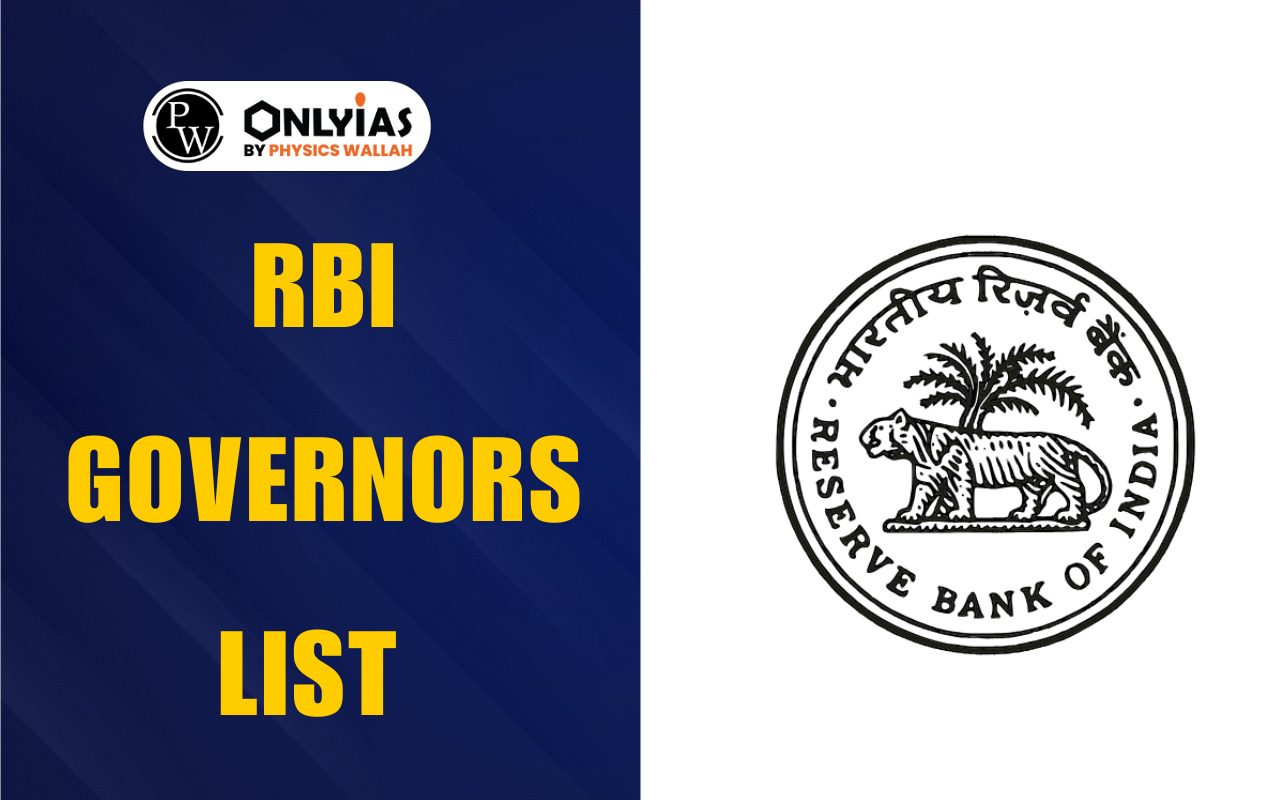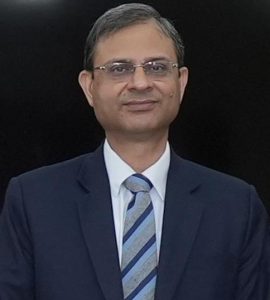Get RBI Governors List 1935 to 2025. Since its establishment in 1935 during the British colonial era, several individuals have served as the Governor of the Reserve Bank of India.

RBI Governors List: The Reserve Bank of India (RBI) holds the highest authority in the banking sector of India. Since its establishment in 1935 during the British colonial era, several individuals have served as the Governor of the Reserve Bank of India. Recently, Shaktikanta Das has been appointed as the Governor of RBI for a term of three years.
As the Chief Executive Officer of the Central Bank of India, the Governor of the Reserve Bank of India holds a significant position and serves as the Ex-officio Chairman of its Central Board of Directors. The Indian currency notes issued by the Reserve Bank of India bear the signature of the Governor. The appointment of the RBI Governor is made by the government of India for a tenure of three years, with the possibility of reappointment.

Sanjay Malhotra, an Indian bureaucrat and IAS official, was born on February 14, 1968. He has been the Reserve Bank of India’s 26th governor since December 11, 2024. He has held several types of roles during his career and is an IAS Officer from the 1990 Batch, Rajasthan Cadre. Sanjay Malhotra was appointed Revenue Secretary in December 2022, and he implemented a new income tax regime during his time in the position.
The Reserve Bank of India (RBI) serves as the central bank of India, entrusted with the responsibility of formulating and implementing monetary policies. It was established on April 1, 1935, under the RBI Act, 1934, based on the recommendations of the Hilton-Young Commission. Initially a privately owned bank, it was nationalized on January 1, 1949, after India gained independence. While its headquarters are currently located in Mumbai, it was originally established in Kolkata and later shifted to Mumbai in 1937.
The Governor, appointed by the Government of India, serves as the head of the RBI. Over the years, the RBI has had 25 governors, with Sir Osborne Smith serving as the first governor in 1935, and Shaktikanta Das currently holding the position. One of the key responsibilities of the RBI is the formulation of monetary policies.
The Central Office serves as the seat of the Governor and the place where policies are formulated. During the colonial era, the RBI was privately owned, but after independence, in 1949, it became fully owned by the Government of India.
The Government of India appoints the RBI Governor, who serves as the chief executive officer of the Reserve Bank of India. In addition to this role, the Governor also acts as the ex-officio chair of the Central Board of Directors. The signature of the RBI Governor is imprinted on Indian currency notes issued by the Reserve Bank of India. Since its inception in 1935, the RBI has been led by twenty-five Governors, with Sir Osborn Smith serving as the first Governor.
Each Governor has played a vital role in shaping the Indian economy and financial sector, overseeing various responsibilities such as maintaining price stability, managing inflation, promoting economic growth, and supervising financial institutions.
The structure of the Reserve Bank of India (RBI) includes the following members:
– One Governor
– Four Deputy Governors
– Fourteen Directors
– Two Government Officers
Here is the updated list of RBI Governors from 1935 to 2025:
RBI Governors List From 1935 to 2025 |
||
|---|---|---|
| S.No. | Governor | Tenure |
| 1 | Sir Osborne Smith | 1st April 1935 – 30th June 1937 |
| 2 | Sir James Braid Taylor | 1st July 1937 – 17th February 1943 |
| 3 | Sir C. D. Deshmukh | 11th August 1943 – 30th June 1949 |
| 4 | Sir Benegal Rama Rau | 1st July 1949 – 14th January 1957 |
| 5 | K. G. Ambegaonkar | 14th January 1957 – 28th February 1957 |
| 6 | H. V. R. Iengar | 1st March 1957 – 28th February 1962 |
| 7 | P. C. Bhattacharya | 1st March 1962 – 30th June 1967 |
| 8 | L. K. Jha | 1st July 1967 – 3rd May 1970 |
| 9 | B. N. Adarkar | 4th May 1970 – 15th June 1970 |
| 10 | S. Jagannathan | 16th June 1970 – 19th May 1975 |
| 11 | N. C. Sen Gupta | 19th May 1975 – 19th August 1975 |
| 12 | K. R. Puri | 20th August 1975 – 2nd May 1977 |
| 13 | M. Narasimham | 3rd May 1977 – 30th November 1977 |
| 14 | I. G. Patel | 1st December 1977 – 15th September 1982 |
| 15 | Manmohan Singh | 16th September 1982 – 14th January 1985 |
| 16 | A. Ghosh | 15th January 1985 – 4th February 1985 |
| 17 | R. N. Malhotra | 4th February 1985 – 22nd December 1990 |
| 18 | S. Venkitaramanan | 22nd December 1990 – 21st December 1992 |
| 19 | C. Rangarajan | 22nd December 1992 – 21st November 1997 |
| 20 | Bimal Jalan | 22nd November 1997 – 6th September 2003 |
| 21 | Y. V. Reddy | 6th September 2003 – 5th September 2008 |
| 22 | D. Subbarao | 5th September 2008 – 4th September 2013 |
| 23 | Raghuram Rajan | 4th September 2013 – 4th September 2016 |
| 24 | Urjit Patel | 4th September 2016 – 10th December 2018 |
| 25 | Shaktikanta Das | 12th December 2018 – 11th December 2024 |
| 26 | Sanjay Malhotra | 11th December 2024 – Present |
The eligibility criteria for becoming an RBI Governor have evolved over time. Initially, RBI Governors were usually selected from Indian Civil Services backgrounds, such as C.D. Deshmukh and Benegal Rama Rau.
However, currently, any individual who holds a graduate or post-graduate degree, or is a chartered accountant, can become an RBI Governor, provided they have relevant work experience in institutions such as the IMF, World Bank, banks as chairman or general manager, reputed financial or banking organizations, or the Ministry of Finance (GOI). The individual must be at least 35 years old, should not be a member of Parliament or State Legislature, and should not hold any other office for profit.
The appointment of the RBI Governor is not made by the Prime Minister’s Office (PMO) on the recommendation of the Union Finance Minister. The selection process is carried out independently.
As per the constitution, the tenure of an RBI Governor is three years, with the possibility of extension for an additional two years. The Governor can be terminated either by dismissal from the President or by submitting a resignation to the President.
The RBI Governor holds several important responsibilities, including:
1. Maintaining monetary stability and formulating policies for the Reserve Bank of India.
2. Granting licenses for new foreign and private banks.
3. Controlling interest rates on advances and deposits, within certain limits.
4. Regulating and administering the financial system.
5. Managing external trade, payments, and the foreign exchange market.
6. Monitoring currency supply and managing currency notes and coins.
7. Ensuring customer-friendly rules and regulations.
8. Supervising primary cooperative banks through the Urban Bank Departments.
9. Facilitating and monitoring credit flow to small-scale industries, rural, and agricultural sectors.
10. Regulating state cooperative banks, regional rural banks, and various local area banks.
Ready to boost your UPSC 2026 preparation? Join PW’s UPSC online courses today!
The first Indian Governor of the Reserve Bank of India (RBI) was C.D. Deshmukh.
As of now, the Reserve Bank of India (RBI) has had 25 governors since its establishment in 1935.
Sanjay Malhotra is the current Governor of the Reserve Bank of India (RBI).
The Reserve Bank of India (RBI) was established on April 1, 1935.
The appointment of the RBI Governor is made by the Government of India. The Prime Minister's Office (PMO) recommends the appointment to the President of India, who officially appoints the Governor. The selection is based on the recommendations of the Union Finance Minister and the Cabinet Committee on Appointments.
Sir Osborne Smith was the first Governor of the Reserve Bank of India. He served as the Governor from 1935 to 1937.

<div class="new-fform">
</div>